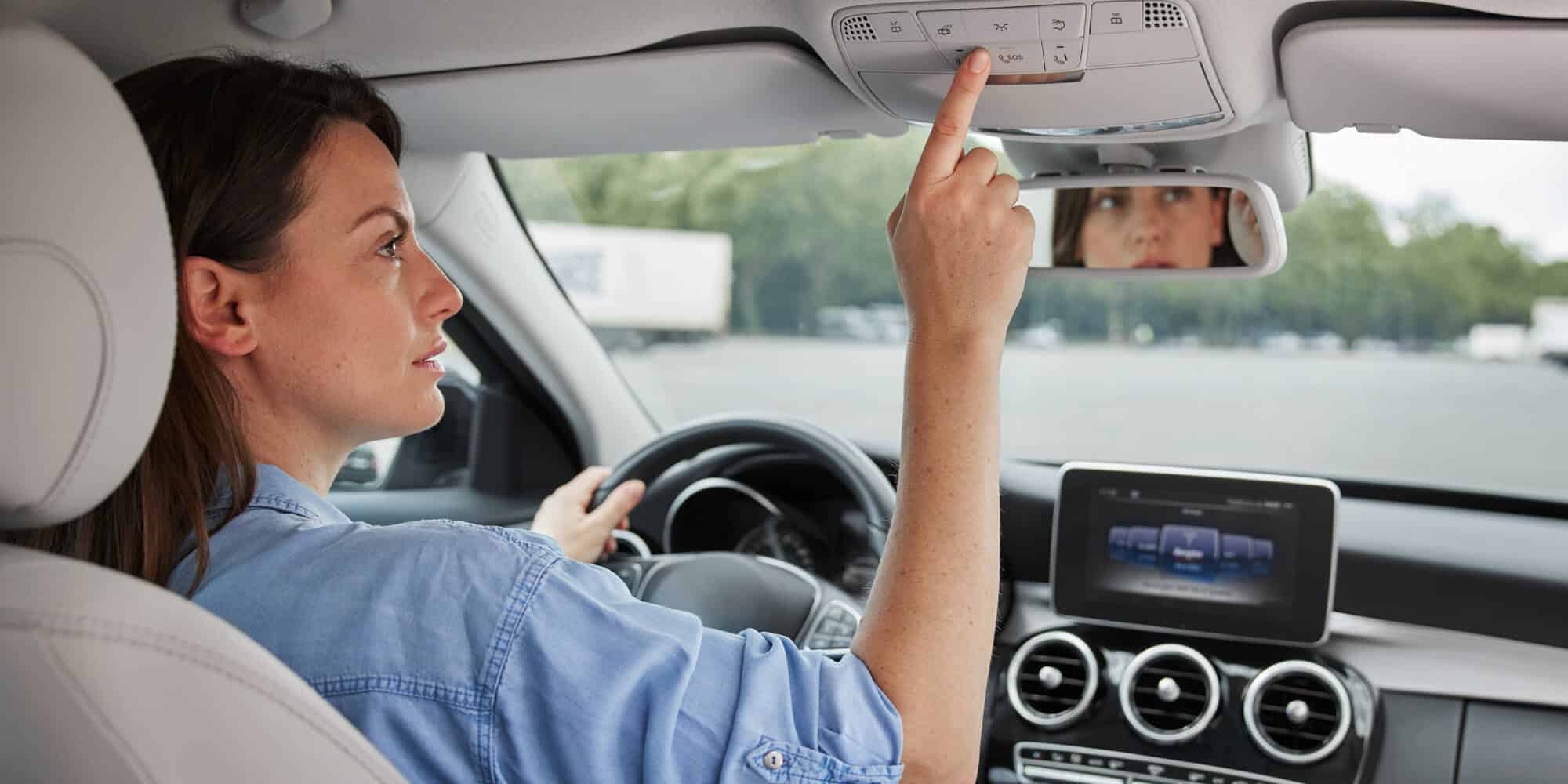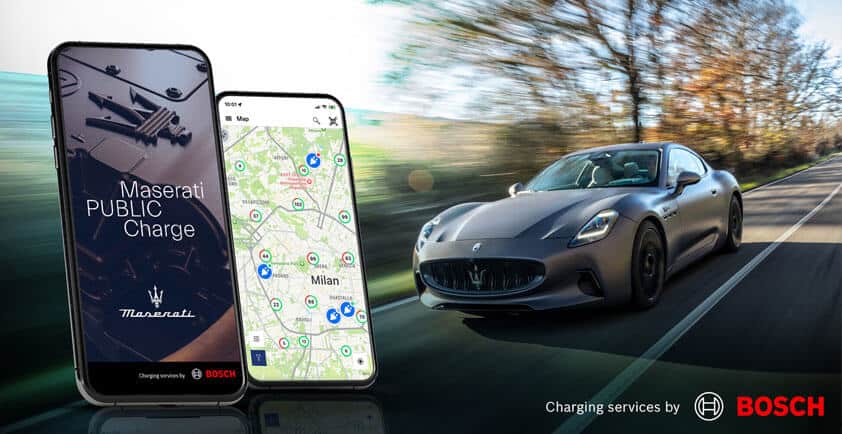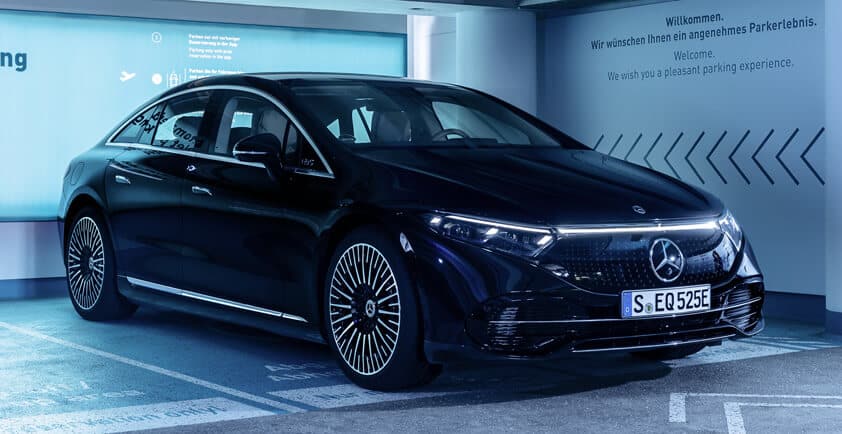

TEN YEARS OF INCREASED ROAD SAFETY WITH BOSCH ECALL
From an internationally successful emergency call service to the eCall of the future
>> Launched in 2012: The Bosch international emergency call service for cars turns ten.
>> The service is available in over 50 countries and in more than 20 languages.
>> Worldwide, 27 million vehicles from more than 15 car brands have Bosch eCall.
>> Innovations for even greater road safety: smartphone-based eCall and data transmission according to modern standards.
Frankfurt am Main - Black ice on the highway. A vehicle leaves the road, flips over and slides down an embankment. There's no one around to witness the accident. "Emergency Call", known as eCall for short, was developed for situations precisely like this. In the event of an accident or emergency situation, the emergency call system for vehicles establishes a voice connection to an emergency call point to request rapid assistance either automatically or at the push of a button. Bosch Service Solutions is a leading international provider of this life-saving service. Ten years ago, on behalf of Mercedes-Benz, the service provider developed one of the first integrated emergency call services that went on to become a global success. "In June 2012, the service went live in nine countries and six languages. Today, it is already available in more than 50 countries and more than 20 languages – and there are more and more. Currently, around 27 million cars from more than 15 car brands have the Bosch emergency call service fitted," explains Stefan Gross, Head of Mobility Services at Bosch Service Solutions. In the past ten years, the company has processed over eleven million eCalls. As a pioneer in this field, it is also constantly bringing innovations to the market, most recently the smartphone-based eCall.
Launch of the eCall service in 2012
While the Bosch emergency call service still involved a combination of on-board computer and driver's cell phone in 2012, the standard integration for Mercedes-Benz cars followed in 2014. Since then, the corresponding technology has been integrated into the infotainment module – it detects an impact, sends an emergency call and transmits a package with accident-relevant data. Bosch has established an international network of service centers for the eCall service, including a comprehensive IT infrastructure. These include partner networks with connections to rescue control centers, fire departments and hospitals in the relevant countries. The service provider developed the high standards of the Bosch eCall based on years of experience in alarm and emergency call management.
Saving lives and increasing road safety
The benefits of emergency call systems in vehicles also gained acceptance at the political level: eCall became a mandatory requirement in the EU on March 31, 2018. Since then, passenger cars and light commercial vehicles newly launched on the market in the EU must have an integrated emergency call service. Consequently, two systems operate in the EU: the statutory 112 eCall system and the eCall systems run by private providers such as Bosch - both of which meet the defined EU standards. The difference is that with private eCall, the emergency call is received at the provider's own emergency call centers and immediately forwarded to the public control centers if necessary. The advantage is that faulty alarms, such as those caused by accidentally pressing the emergency call button, can be filtered out in this way. This relieves the rescue coordination centres and keeps capacities free for emergencies. With a quota of around 90 percent, Bosch has filtered out around ten million faulty eCalls in the last ten years. Another plus: Bosch emergency call center employees stay on the phone to attend to the people involved until the rescue forces arrive.
Euro NCAP confirms improved road safety
A major advantage of Bosch eCall is its multilingual nature: vehicle occupants in many countries can report an emergency in their own language. A German tourist on vacation in Spain, for example, will be addressed in German, which can be of great value psychologically and when it comes to passing on the details of the accident. In turn, the rescue control centers are informed in the local language, avoiding misunderstandings. What's more, they receive information that goes beyond the so-called minimum data set associated with EU-112 eCalls. This includes, among other things, the geographical position, the time of the accident and the direction of travel of the accident vehicle. Bosch also passes on data such as the number of occupants and the severity of the accident. Both are factors that improve the rescue chain and thus help occupants. Euro NCAP, the independent assessment organization for vehicle safety, also evaluates in-car eCall systems when it checks the road safety of new cars in crash tests. The availability of the emergency call in as many languages as possible also has a positive impact on the evaluation, as does the transmission to the rescue control centers of accident-related data that goes beyond the minimum data set.
Combining smartphone and LTE for the eCall service of the future
Bosch is continuously developing eCall and regularly launches technical innovations on the market. For example, Bosch eCall can now be integrated into fleet vehicle apps thanks to smartphone-based collision detection. Bosch is also working on expanding faster digital transmission paths. In the USA, for example, Bosch is focusing on "Next Generation eCall" and transmits accident data from the car to emergency call centers via an internet-based data connection using LTE. "Very high speed and excellent voice quality speak for the transmission via LTE," explains Stefan Gross. "That helps us to set the rescue chain in motion particularly quickly."
Digitizing the rescue chain
The transmission of relevant information from the emergency call centers to the rescue control centers is also evolving: this is necessary because data transmission in EU-112-eCall is limited to the older 2G and 3G telephone networks, which are under constant threat of being shut down. At the same time, however, Germany still lacks a legal basis that clearly regulates how emergency calls from private providers can be transmitted digitally to the control centers. As a result, many emergency calls are still passed on by voice call. Bosch is working to expand the use of modern digital transmission paths. "We hope that the course will be set for fast digital data transmission throughout the EU as soon as possible, which will be used across the board", says Stefan Gross. Whatever happens, Bosch is well equipped to handle future emergencies quickly and effectively – with the aim of saving even more lives.


BOSCH ACCELERATES SOFTWARE DEVELOPMENT FOR AUTOMATED DRIVING WITH ACQUISITION OF FIVE
Europe’s leading startup for self-driving cars to become part of Bosch
>> Markus Heyn: "Five will give an extra boost to our work in software development for safe automated driving."
>> Five employs 140 associates at six locations in the United Kingdom.
>> The software building blocks in Bosch and Five’s toolchain engineering environments complement each other.
Stuttgart, Germany – The development of self-driving cars is regarded as the ultimate discipline for automakers. As one of the world’s biggest mobility providers, Bosch is a driving force behind the progress being made in this discipline. Now, it’s strengthening its hand by acquiring Five, Europe’s leading startup in the field of automated driving. At six locations in the United Kingdom, its roughly 140 associates are working on the vision of safe, self-driving vehicles. Five gave preference to Bosch over other takeover bidders. The two companies share a common vision of automated driving and of safe automated driving systems. The agreements with Five were signed at the beginning of April. It has been agreed that the financial details will not be disclosed. The acquisition is still subject to approval by the antitrust authorities.
Automated driving is set to make road traffic safer. We want Five to give an extra boost to our work in software development for safe automated driving, and offer our customers European-made technology," says Dr. Markus Heyn, member of the Bosch board of management and chairman of the Mobility Solutions business sector. Headquartered in Cambridge, U.K., Five is to be part of the Bosch Cross-Domain Computing Solutions division. "Scale matters in building automated driving technology. Bosch is a global leader in driving assistance technologies, with core technologies and vast data lakes that will be essential in bringing safe self-driving systems to market. We’re excited for Five to become part of Europe’s most powerful SAE Level 4 player and to be a part of Bosch’s future success," says Stan Boland, the CEO of Five.
Simulation environment allows software to be tested and validated
Since it was set up in 2016, Five has built a team of experts in cloud software, safety assurance, robotics and machine learning, and has placed itself at the forefront of developing state-of-the-art software and artificial intelligence-based solutions for autonomous driving, through SAE Level 4. The startup now focuses primarily on a cloud-based development and testing platform for the software used in self-driving cars. This offers engineers the programs they need to create automated driving software at pace, and to test it before and during its deployment in test vehicles. The platform is able to analyze real data from a fleet of test vehicles, create advanced testing scenarios, and build a simulation environment that makes it possible to assess and validate system behavior at hyper-scale.
Agile collaboration between Bosch and Five teams
At Bosch, Five will strengthen the company’s agile project structure for the development of self-driving cars. The two teams’ software engineering environments complement each other very well, and will be merged to form a single solution. "Five is the perfect fit for our engineering activities – not least due to its associates’ mindset and agile approach. This brings us closer to our aim of getting safe automated driving onto our roads," says Dr. Mathias Pillin, president of the Bosch Cross-Domain Computing Solutions division. For Bosch, moreover, the acquisition is a further step toward consolidating its market position in software and automated driving. Only recently, the company extended its portfolio by acquiring Atlatec GmbH, a specialist in the field of high-resolution digital maps. This means Bosch will be the only company that can offer its customers all the necessary building blocks of automated driving from a single source – from actuators, sensors, and maps to software and the engineering environment.
Bosch is working on all levels of automated driving
For Bosch, automated driving is and will remain a strategic business field. The company is the innovation leader in this area. With its driver assistance systems and the requisite sensor technology, it laid the foundation for all automation levels at an early stage. Bosch is taking a two-pronged approach. On the one hand, with the aim of making driving safer and more relaxed, it is developing solutions for private vehicles with a focus on driver assistance and on partially and conditionally automated systems (SAE Levels 1 to 3). On the other hand, the team is also working on solutions for higher levels of automation, with a focus on fleet vehicles and new operating models. In the logistics sector in particular, Bosch sees attractive applications and business potential for SAE Level 4 automated driving systems. Moreover, Bosch has already developed automated valet parking, the first production-ready driving function not to require a driver.


ACCESS TO SECURED VEHICLE DATA OF VARIOUS MANUFACTURERS VIA BOSCH SECURE DIAGNOSTIC ACCESS
Active diagnostic working on access-protected vehicle electronics of Fiat and Mercedes-Benz vehicles
>> Bosch expands diagnoses on vehicles with access-protected electronics complementing its offer by additional makes
>> Access to protected vehicle data of different makes and manufacturers via Secure
>> Diagnostic Access after just a single registration
>> Access to protected diagnostic data ensures competitiveness of independent workshops
Karlsruhe/Plochingen - Nowadays, numerous vehicles require a manufacturer-specific access authorization in order to perform active diagnostic tasks such as the calibration of driver assistance systems or setting back service notifications. This presents mostly independent workshops with serious problems. Bosch thus developed a standardized solution: Bosch Secure Diagnostic Access (SDA) provides access to access-protected diagnostic contents using Esitronic diagnostic software. Since August 2021, workshops using Esitronic 2.0 Online combined with a license for control-unit diagnosis are able to access protected electronic systems of several vehicles produced by the Volkswagen group via SDA. Bosch SDA thus meets the requirements of the current security level for tasks on vehicles produced by the VW group. Ever since the Esitronic 2.0 Online and KTS 250 software updates performed earlier this year, users can now also use SDA to access protected vehicle data of Fiat, Alfa Romeo, Lancia, Abarth, Chrysler, Jeep and Dodge/RAM vehicles. Furthermore, SDA will be expanded in June to provide access to current Mercedes-Benz vehicles, as well. In addition, Bosch is also closely cooperating with the development departments of additional vehicle manufacturers in order to continuously expand the access possibilities via SDA.
Personal Bosch ID for straightforward SDA use
To use Secure Diagnostic Access, members of workshop staffs need to create a personal free-of-charge Bosch ID consisting of an e-mail address and a self-chosen password via a guided process. A single registration is sufficient. Once registered, they get access to all protected diagnostic data via SDA.
Only for the access to protected data of Mercedes-Benz vehicles an additional process step – besides creating a Bosch ID – is required for the network identification. Afterwards, these protected data are available as well.
Comprehensive explanations and hints at the SDA help center
There are basically two ways of accessing SDA via Esitronic workshop software. On the one hand, users can activate the SDA access within Esitronic right at the beginning of their diagnosis using their Bosch ID. On the other hand, Esitronic also informs the users: Once the vehicle is connected for diagnostic purposes, Esitronic opens a pop-up window pointing out that the respective vehicle is equipped with a protected electronic system. By means of a link, users can also access the SDA help center providing additional support. It contains important information concerning topics related to Secure Diagnostic Access such as frequently asked questions as well as explaining images and videos.
A prerequisite for the use of Bosch Secure Diagnostic Access is Esitronic 2.0 Online diagnostic software and a valid license for control unit diagnosis as well as a stable internet connection. Furthermore, a diagnostic tester of the current Bosch KTS generation – such as KTS 590, KTS 560, KTS 350 or KTS 250 – is also required. This enables even multi-brand workshops to perform active diagnostic tasks on modern vehicle models thus ensuring their competitiveness.













